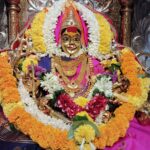Anupama Nair
India also has a long history of sericulture. The archaeological discoveries in Harappa and Mohenjadaro suggest that sericulture, using wild threads from native silk-room species, existed in India between 2450 BC and 2000 BC, and the Indus silks were obtained from more than one species. The fibers discovered were dated to around 2450–2000 BC and were processed using similar techniques as found in China.
There was a type of silk famous then called Jamawar. Kings and nobles bought the fabric by the yard, wearing it as a gown or using it as a wrap or shawl. It was then the Jamawar weaving centers in India developed in the holy cities and the trade centers. The most popular jamawar weaving centers were in Assam, Gujrat, Karachi, Malwa and South India. The brocade weaving centers in India developed in and around the capitals of kingdoms or holy cities like Benares and Kanchipuram, because of the demand for expensive fabrics by the royal families and temples for dressing their deities. The ancient centers in the north were mainly Delhi, Lahore, Agra, Fatehpur Sikri, Varanasi, Mau, Azamgarh and Murshidabad were the main centers for brocade weaving.
The US is the largest importer of Indian silk and silk products over recent years, followed by China and the UAE. The annual export of silk and silk products from India is estimated at around US$ 400 million. Amazing isn’t? In fact, India is the only country in the world that produces all the five kinds of silk namely Mulberry, Eri, Muga, Tropical Tasar and Temperate Tasar. The top ten largest silk-producing states in Independent India are Karnataka, Andhra Pradesh, Assam, West Bengal, Jharkhand, Tamil Nadu, Meghalaya, Nagaland, Manipur and Maharashtra.
There are four categories of natural silk produced in India for commercial purposes. These are known as Mulberry silk, Tasar silk, Muga silk, and Eri silk. Among these four kinds, mulberry silk contributes to more than 80% of the silk produced in the country.
The Muga silk is one of the rarest silks produced in the world. It is known for its shimmering glossy texture and extreme durability. This silk is produced by the larva of a silkworm named the Assam silk moth. Muga silk is considered to be among the strongest natural fibers and has a distinct natural yellowish-golden tint. One of the most expensive varieties of silk produced in the world, Muga silk is used to make mekhela chador (traditional Assamese wear), sarees, kurtas, stoles, etc.
Eri silk, also known as Endi or Errandi silk is one such variety of silk, which is processed from the open-ended cocoons of the domesticated silkworms native to Assam. Since the silk is obtained without killing the silkworm, it is also referred to as “Ahimsa silk or peace silk”. This is one of the reasons that the Buddhist monks of India, China, Nepal, and Japan prefer this silk of non-violent origin.
Tasar silk also known as Kosa silk in Sanskrit is primarily produced in the states of West Bengal, Bihar, Odisha, Jharkhand, Chhattisgarh, Madhya Pradesh, and Maharashtra. The Oak Tasar silk is a finer variety of the Tasar silk produced in India. Tasar silk is generated from the larvae of the silkworm that live in wild forests hence called ‘wild silk’. India occupies the second position as a producer of Tasar silk and is the exclusive producer of Indian Tussar.
Sarees made from this silk are its most famous produce, though it is also used to generate fabrics for furnishing, dupattas, and dresses. The Tasar silk sarees produced in West Bengal have a typical papery effect. Bhagalpuri silk and Kosa silk are two kinds of well-known sarees made from Tasar silk.
(to be continued…
































